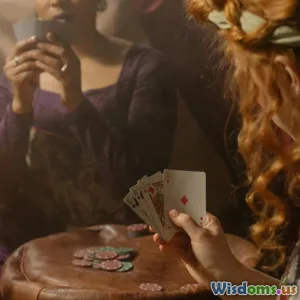
The Evolution of Female Representation in Games
8 min read Explore the dynamic shift in female representation in video games, from stereotypes to empowered characters driving change. (0 Reviews)
The Evolution of Female Representation in Games
The world of video games has transformed dramatically since its infancy, not just in graphics and gameplay, but equally in how it portrays its characters—especially women. Early games often relegated female characters to roles that reflected societal stereotypes or limited visibility, subtly reinforcing traditional gender norms. Today, vibrant, complex, and empowered female characters stand in the spotlight, reshaping player perceptions and transforming the gaming culture. This article explores this compelling evolution, loci of change, and how representation impacts this multibillion-dollar entertainment sector.
A Historical Perspective: Early Depictions and Stereotypes
In the early days of gaming during the late 1970s and 1980s, female characters were usually scarce and peripheral. When present, they often functioned as rewards or damsels in distress, reinforcing a male-centric narrative. A classic example is Princess Peach in the Super Mario series, whose primary role was to be rescued by Mario, underscoring limited female agency.
Another common trope was the hypersexualized female, rooted more in appeal to a presumed male audience than in narrative depth. Games like "Ninja Gaiden" featured female ninjas—the portrayals emphasized visual allure more than realism or character development.
Moreover, female protagonists were rare; the gaming audience itself was predominantly identified as male, which influenced character choices and storylines.
Breaking the Mold: Pioneering Female Characters
The 1990s and early 2000s saw the first significant shifts toward deeper female roles in gaming. Lara Croft, introduced in 1996 in "Tomb Raider," became one of the first widely recognized female protagonists. Lara was agile, intelligent, and capable, pushing against the boundaries of passive female iconography. While some criticism focused on her exaggerated physical features, Lara undeniably opened doors for female-driven narratives.
Similarly, characters like Samus Aran from "Metroid" surprised many players when players discovered the protagonist was a woman—especially since Samus was initially obscured by her armor. This moment challenged stereotypes of heroism and femininity.
Games began to experiment with narrative complexity by exploring character motivations, flaws, and strengths irrespective of gender, setting foundations for equality and diversity in storytelling.
Toward Inclusivity: Modern Representations and Diversity
The 2010s marked a seismic shift, reflecting broader societal conversations about gender equality and representation. Female characters became multifaceted, embodying varied personalities, backgrounds, and motivations.
Consider Aloy from "Horizon Zero Dawn," introduced in 2017—she is a skilled hunter navigating a post-apocalyptic world with resilience and intelligence. Aloy’s character resonates due to her relatability and depth, far removed from early stereotypes.
Another important trend is the rise of customizable avatars, like in "The Last of Us Part II," featuring Ellie—a fully fleshed out protagonist with a rich emotional arc and diverse identity, including her sexuality, offering nuanced portrayal rarely seen before.
Representation Beyond the Screen
The industry itself has also begun addressing representation behind the scenes. Women are increasingly present as developers, designers, and writers, shaping characters and storylines that authentically reflect diverse experiences.
Organizations like Women in Games International (WIGI) advocate for inclusivity and provide platforms for women’s voices in the industry. These structural changes promote representation not just on-screen but across the development pipeline, influencing content from its inception.
The Impact of Female Representation
Why does representation matter? According to a study conducted by the Entertainment Software Association in 2021, nearly 46% of gamers identify as female. Visibility of strong female characters encourages inclusivity, broadening the appeal of games and dismantling outdated gamer stereotypes.
Moreover, representation affects how players perceive gender roles and relationships. Games like "Celeste," which features a protagonist dealing with mental health challenges, demonstrate that female characters can highlight diverse human experiences, fostering empathy and understanding.
Positive representation can inspire young women to pursue careers in STEM and gaming, fields traditionally dominated by men. The role models provided in games can shape self-identification and confidence.
Ongoing Challenges and Future Directions
Despite significant progress, challenges remain. Female characters sometimes continue to experience excessive sexualization or marginal roles in certain genres, such as action or RPG titles. Tokenism and lack of nuanced female NPCs can also limit the depth of immersive worlds.
There is increasing pressure on the industry to develop intersectional representations that include women of different ethnicities, sexualities, abilities, and ages. Games like "Life is Strange" series illustrate powerful storytelling with diverse, authentic female characters across different identities.
The future promises advancements with evolving AI, motion-capture technologies, and open-world narratives that encourage player agency and personalization, pushing boundaries of how identity and gender are represented in digital spaces.
Conclusion
The evolution of female representation in games mirrors broader societal shifts, highlighting changing attitudes toward gender and inclusivity. From marginal roles and stereotypes to complex protagonists like Lara Croft, Aloy, and Ellie—games increasingly embrace diversity and depth.
This evolution isn’t merely about visibility but about meaningful, authentic representation that resonates emotionally with players and creates more inclusive gaming cultures. As the industry continues developing, the recognition of multi-dimensional female characters will not just enrich stories but help cultivate a community where everyone sees themselves as heroes. The narrative is clear: the game is on for genuine equality and representation.
References
- Entertainment Software Association (2021). "Essential Facts about the Video Game Industry."
- WIGI (Women in Games International): https://www.womeningamesinternational.org
- "Tomb Raider" (1996) and "Horizon Zero Dawn" (2017) by Square Enix and Guerrilla Games respectively.
- "The Last of Us Part II" by Naughty Dog (2020).
Author: AI Content Platform
Rate the Post
User Reviews
Popular Posts





















